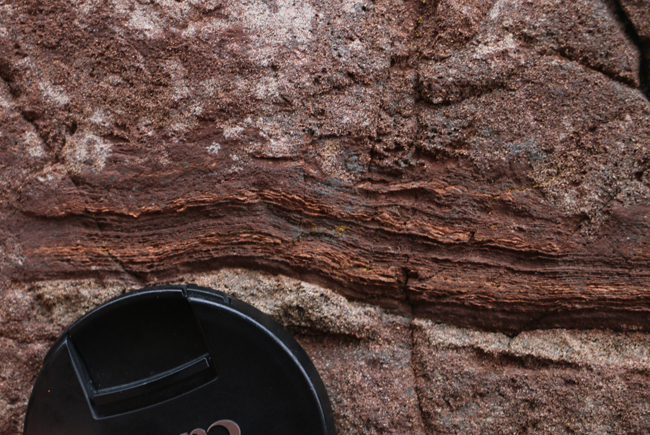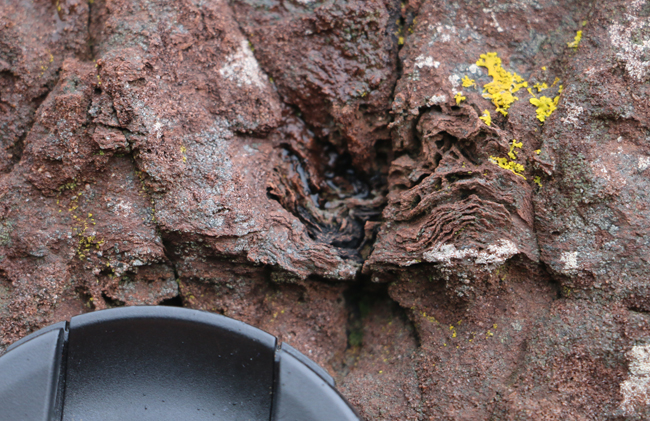This is the Split Rock at Clachtoll, on the shore of the North-West Highlands of Scotland. You’re looking out to sea, over the Minch. It’s the site that graces the cover of the excellent book A Geological Excursion Guide to the North-West Highlands of Scotland, by Kathryn Goodenough and Marten Krabbendam.

“Clach toll” apparently means “Split rock” — Go figure.
The Split Rock is an easy landmark to steer toward if you’re in the neighborhood. And steer that way you should, for there are MISS in them thar rocks.
Microbially-induced sedimentary structures (MISS) are essentially stromatolites preserved in siliciclastic sedimentary rocks. Like stromatolites, they are evidence of ancient microbial biofilms which trapped, baffled, and bound sediment. Unlike stromatolites, they do not typically display doming-upward morphologies, and instead look like finely laminated “crinkles” in mud and sand layers. They may be disrupted by erosion, generating flakes or “roll-ups”.
At Clachtoll in Scotland’s North-West Highlands, there are excellent exposures of the Clachtoll Formation of the Stoer Group, a package of ~1.2 Ga sedimentary rock that unconformably overlies the (Archean, ~3.0 Ga) Lewisian basement. Near Split Rock, there are some layers showing MISS in the Stoer Group. I took some photos at the site, as well as a GigaPan, and made a GIGAmacro and a 3D model when I got home, too. Feast your eyes:
Here is the GigaPan of the outcrop:
Link GigaPan by Callan Bentley
Within that panorama, see if you can find things that look like this:





Here, just about the lens cap, erosion has cut into the microbial laminations and filled in the scour with coarser sand:

Many of the most charismatic examples show crinkly crenulations:









…And here is a GIGAmacro of a beach cobble I picked up nearby:
Link GigaPan by Callan Bentley
I made a 3D model of this sample, too:
Fossil slime never looked so good!
These subtle little features are the oldest evidence of life in the United Kingdom.

Nice pictures!
Have you anything published on these stromatolites? I would love to have a pdf from it!
Thanksm
Elizabeth Chacon
Mexico